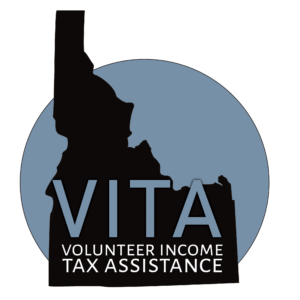Tax tips from the IRS:

Learn How Scammers Pose as The IRS
Issue Number: Tax Tip 2023-99
Crooks are always looking for new ways to scam unsuspecting taxpayers. Scammers impersonate the IRS by phone or email, in person, or by mail or delivery service – and cost people their time and money. By staying vigilant against schemes and scams, taxpayers can protect themselves.
Scammers can pose as the IRS by mail – taxpayers should know the facts
One of the newest and more devious schemes involves mail coming in a cardboard envelope from either a delivery service or the United States Postal Service (USPS). The enclosed letter includes the IRS masthead and wording that the notice is “in relation to your unclaimed refund.” The contact information does not belong to the IRS, but the mailing looks official. This scheme seeks sensitive personal information from taxpayers – including driver’s license photos – that can be used by identity thieves to steal the taxpayer’s refund and other sensitive financial information.
It’s now easier to spot when it’s a scammer at the door and not the IRS
Scam artists may also appear at the door posing as IRS agents, creating confusion for not just the taxpayers but also local law enforcement agencies. As this scam has grown, taxpayer confusion about home visits by IRS revenue officers has increased.
To help combat these scams, the IRS recently announced that it is ending most unannounced visits to taxpayers by agency revenue officers. In place of the unannounced visits, revenue officers will instead contact taxpayers through an appointment letter, known as a 725-B Letter, and schedule a follow-up meeting. This will help taxpayers feel more prepared when it is time to meet.
Taxpayers who receive a request from IRS in the mail or by phone can always contact IRS customer service to authenticate it.
Scammers may also contact taxpayers electronically
Taxpayers should be on the lookout for asummer surge of tax scams as identity thieves continue sending email and text messages promising tax refunds or offers to help ‘fix’ tax problems. They may pose as the IRS or tax professionals, urging the taxpayer to click fraudulent links so the identity thieves can steal valuable personal information.
Taxpayers should remember: the IRS never initiates contact regarding a bill or tax refund by email, text or social media.
How to Avoid Processing Delays and Refund Adjustments
Issue Number: Tax Tip 2023-46
Taxpayers can avoid common errors on their federal tax returns and get their refund sooner by ensuring their tax return is complete, accurate and error-free. They should follow the tips below for a smoother filing process.
Gather all tax documents
Taxpayers should gather all documents to support tax deductions and credits, like education credits or mortgage interest payments. Taxpayers should also have their Forms W-2, 1099 and prior-year tax return available; they may need them.
File electronically
Filing electronically through IRS Free File or other e-file service provider helps reduce math errors and identifies potential tax credits or deductions the taxpayer may be eligible to claim. Filing electronically and choosing direct deposit is a fast and secure way for taxpayers to receive a refund.
Report all taxable income
Most income is taxable. Under-reporting income may lead to penalties and interest. Income may include unemployment income, interest received and income from the gig economy, service industry and digital assets. Publication 525, Taxable and Nontaxable Income, has more information.
Request an extension, if needed
Taxpayers who need more time to file can easily request a six-month filing extension to Oct.16 to prevent late filing penalties. Use IRS Free File or visit irs.gov/extension to file for an extension by April 18. While an extension grants additional time to file, tax payments are still due on April 18 for most taxpayers.
Taxpayers can also request an extension by paying all or part of their estimated income tax due and indicating that the payment is for an extension. They can do this using Direct Pay, the Electronic Federal Tax Payment System, or a debit or credit card or digital wallet. This way taxpayers don’t have to file a separate extension form and will receive a confirmation number for their records.
Mail paper returns to the right address
Taxpayers and tax professionals are encouraged to file electronically if possible. Those who need to file a paper tax return should confirm the correct address of where to file on IRS.gov or on Form 1040 instructions to avoid processing delays.
Keep a copy of the tax return
When ready to file, taxpayers should make a copy of their signed return and any schedules for their records. Copies help them prepare future tax returns and make math computations if they need to file an amended return. Generally, taxpayers must keep their records that support an item of income, deduction or credit shown on their tax return until the period of limitations for that tax return ends.
Accessible Forms & Media
Issue Number: Tax Tip 2023-88
The IRS strives to serve all taxpayers by providing tax information in a variety of formats and languages. As part of that goal, the IRS Alternative Media Center offers accessible products to help people who use assistive technology such as screen reading software, refreshable Braille displays, screen magnifying software and voice recognition software.
People can view and download hundreds of tax forms and publications in alternative formats, many of which are available in Spanish, including:
- Text-only
- Braille ready files
- Browser-friendly HTML
- Accessible PDF
- Large print PDF
Where to get accessible tax products
People can download accessible tax forms, instructions and publications from the Accessible Forms and Publications page of IRS.gov. They can also request paper copies by calling 800-TAX-FORM or 800-829-3676.
How to request tax notices in accessible formats
To get IRS tax notices in Braille, large print, audio and electronic formats – including notices about additional taxes or penalties owed – taxpayers can complete Form 9000, Alternative Media Preference. To submit the form, taxpayers can:
- Include the completed form with their tax return
- Mail it as a standalone form to the IRS at the address on the form
- Call 800-829-1040
Once the IRS processes the taxpayer’s Form 9000, future notices will arrive in the taxpayer’s preferred format.
To request notices in their preferred language, taxpayers can complete Form 1040 Schedule LEP. The AMC provides all alternative media formats in Spanish and all available languages in large print. And the AMC is working to introduce more IRS resources in accessible formats.
The accessibility helpline can answer questions
The IRS Accessibility Helpline can answer questions related to accessibility services and alternative media formats available to taxpayers with disabilities. For accessibility assistance, taxpayers can call 833-690-0598.
For assistance with tax law, refunds and other account related issues, people can visit the Let Us Help You page of IRS.gov. The Accessibility Helpline doesn’t have access to taxpayer IRS accounts.
How to Get an Individual Taxpayer Identification Number:
CONTACT US:
Still have questions? Feel free to contact us by filling out the form below.
We will respond to your inquiry as soon as possible.
